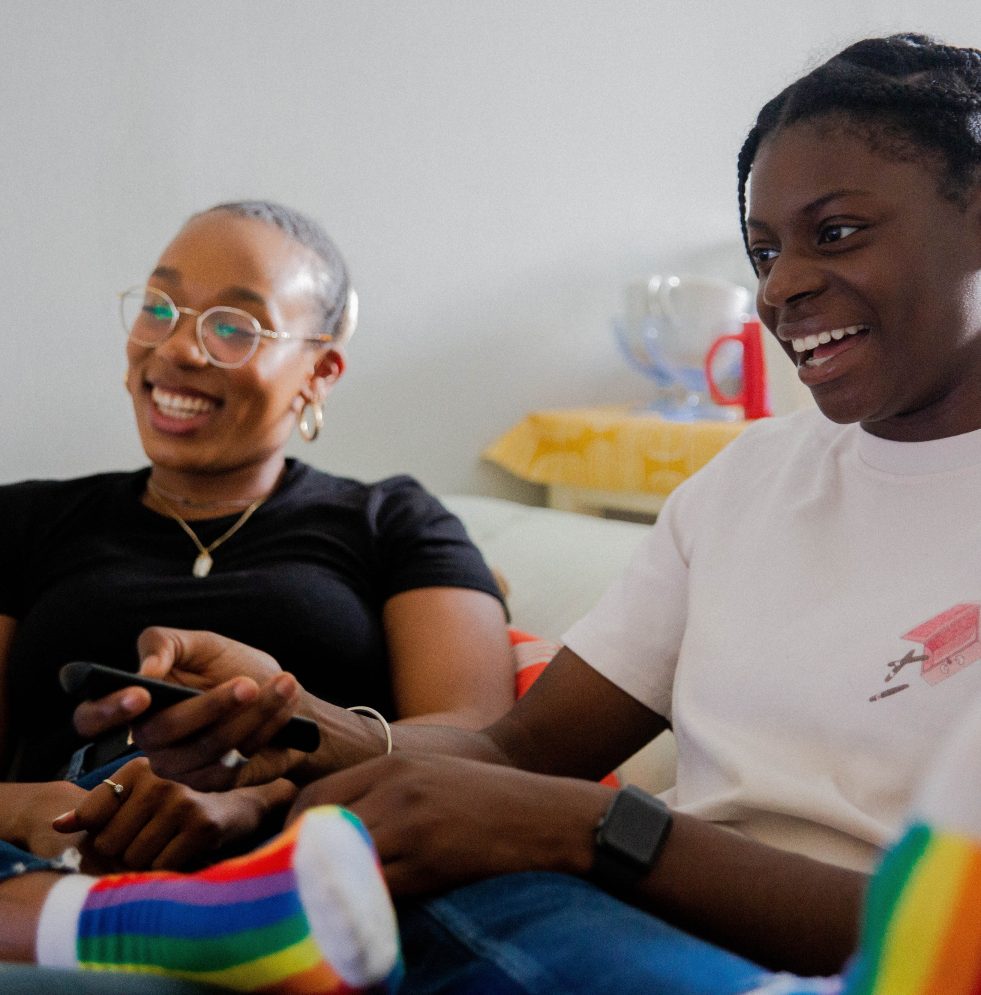Those of you who aren’t surrounded by queer culture may not be aware of LGBTQIA+ microlabels beyond pansexual and non-binary. Often, misunderstandings and misconceptions about this community are caused by a lack of (if any) responsible and respectful LGBQTIA+ representation in mainstream culture, media and news. However, this is shifting, and as more LGBTQIA+ people feel able to live their lives publicly and openly, more labels and terms are emerging.
Why are labels important?
Labels can be used to accurately represent and portray the experiences of individuals. Everyone is different, and chances are no two people are going to feel the same about their sexual and/or romantic identity. That’s why, to lots of queer people especially, labels such as abrosexuality can help bring clarity and comfort that they’re not alone in their feelings.
Abrosexuality Meaning
So, what does abrosexual mean? Abrosexual is quite a unique label. Falling under the umbrella of multisexuality, abrosexuality is experiencing different levels or types of sexual (or romantic) attractions throughout your life.
An abrosexual person may have changes in their sexual identity over time. To clarify, they may feel sexually attracted to men at one point, then not anyone later on. An abrosexual person may experience varying levels of intensity with their attraction, too. This variation can take place over long periods of time, with changes occurring gradually, or it may be that change is the constant factor, with someone’s sense of sexuality changing from day to day.
Like many other other sexuality labels, abrosexuality is made up of a prefix (“abro”) and the words “sexual” or “sexuality”. The prefix (“abro”) comes from the Ancient Greek root ἁβρός (habrós), or its modern Greek variant αβρός (avrós), which can mean “graceful” or “delicate.” On the other hand, the Ancient Greek word can also mean “flux” or “change.” Isn’t that beautiful? Abrosexual people’s sexuality changes gracefully.
Abrosexual Flag
LGBTQIA+ pride flags come in all types of colours, gradients and patterns. For the abrosexual flag, the most common variant consists of horizontal bands of dark and light green, white, baby pink and a richer pink.
As you’d expect, there isn’t much known about this flag. We did some major Nancy Drew work on Tumblr and Reddit, and it appears the term itself was coined by an anonymous Tumblr account. However, the flag is said to have been created by an elusive “Chad” who was a moderator for Pride-Flag’s Tumblr – which has since disappeared. They confirmed this on their DeviantArt.
Abrosexuality’s fluid nature is shown in the gradient, which fades from #46D294 to #EE1766. The abroromantic flag is the same gradient – but with a heart in the centre to represent romantic attraction.
Labels and Sexual Fluidity
Any kind of sexual fluidity is hard to pin down and tends to be different from person to person. So, it doesn’t feel completely right to define sexual fluidity. Surely, the whole point of referring to yourself as such is to say that there is no fixed experience, it’s undefinable…
But, for the sake of clarity, this is what we’ve come up with:
The term sexual fluidity is used to help people describe their nonlinear and non-fixed experience with their sexuality, regarding their orientation, identity or behaviour.
For most people, sexuality is fixed and doesn’t tend to change over time. However, this isn’t the case for everyone. As we know, for some, sexuality can change over time. Using “sexually fluid” as a descriptor is a powerful statement. Whether intentional or not, sexual fluidity is inherently liberating, standing against the cisgender, heterosexual hegemony. It’s freedom. It’s away from convention, labels or rules.
You shouldn’t be told by anyone what labels to use. Sometimes labels don’t feel right, or used to feel right and now you’re not so sure. Don’t feel pressured to call yourself anything, or to keep using a term that you now feel doesn’t reflect your experience.
Use what feels right – and go from there.
Can you be pansexual and abrosexual?
Pansexual is one of many multisexual labels. Generally, pansexual people are attracted to all people, regardless of gender or sexuality.
Abrosexuality is renowned for its fluid and changing nature, which sets it apart from many sexualities. Someone who uses abrosexual to label their encompassing experience of sexuality may – at certain times – identify as pansexual. However, this label is not likely to stay. This is different to someone who would consistently describe themselves as pansexual.
Abroromantic
Much like its sexual counterpart, abroromantic (or, sometimes, abromantic), refers to one’s experience and intensity of romantic feelings being fluid and changing.
This is not to be conflated with aroflux, which typically refers to shifts between being aromatic – having little to no romantic feelings – and alloromantic – having romantic feelings.
Abroromantic is distinguished from this, as it is not about shifting between aromanticism and alloromanticism (although this kind of change may of course feature). Rather, an abroromatic’s understanding of their romantic identity may shift between further gradations, such as demiromantic and grayromantic.
How many different sexualities are there?
The answer to this question will depend on who you ask! Arguably, the most common way that sexuality has been described is that it exists on a spectrum, known as the Kinsey Scale.
What’s the Kinsey Scale?
In 1948, Dr Alfred Kinsey published the first major study to suggest that people didn’t fit exclusively into the categories of homosexual and heterosexual. Here, Kinsey proposed a scale from points zero to seven. Zero is “exclusively heterosexual”, whereas seven is “exclusively homosexual”. At the time, this was groundbreaking and progressive. In fact, one critic even claimed that Kinsey “spent his lifetime ripping down the institution of the family.”
The Kinsey scale was expanded on in the Storms Sexuality Axis, which has a two-axis scale that accounts for bisexuality and asexuality. However, most modern frameworks of sexuality generally concur that the Kinsey scale is limiting and overlooks other identities.
Do we need a way to measure sexuality?
When people are existing as sexually fluid or abrosexual, does a sexuality spectrum like the Kinsey Scale really need to exist? Researchers such as Kinsey, and later Klein dedicated their academic careers to the study and categorisation of sexuality. But, is it really possible to measure or categorise people in this way? Aren’t we oversimplifying the complexities of human experience?
Further, if everyone’s experience with sexuality is different and totally unique to themselves, would it be wrong to claim that there are as many sexual identities as there are adults?
Chances are, you’ll find a label that fits how you feel about your romantic and/or sexual identity on the internet. You don’t have to use it, but it can be comforting to know that you’re not alone. The world of sexuality is teaming with diversity. So whether you want to identify as abrosexual, sexually fluid or not to have a label at all, the one thing we can tell you with any certainty is that when it comes to your own sexuality, your choices are valid.

Piper Huxley (she/her) is a transgender woman currently living in the south of England. She studied English Literature and Theatre Studies at the University of Reading. Now, Piper is a full-time content writer and creator. Her passions include starting projects that she will never finish, listening to some trashy indie record or staring at her pile of unread books – which seems to be mysteriously growing…

